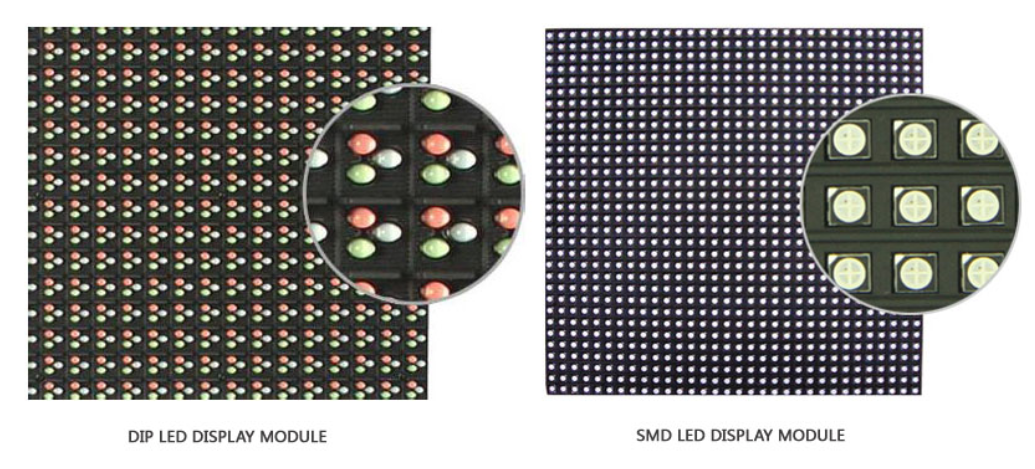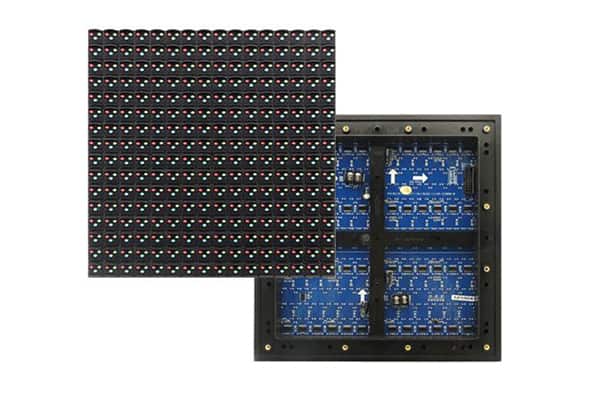
LED are popular lights due to their efficiency, eco-friendliness, and long lifespan. When used in commercial digital signage and scoreboards, LED displays can improve the quality, durability, and cost of lights.
There are many different kinds of LED displays, but in the past 20 years, the most commonly used LED displays are 2 DIP and SMD. Although they have slightly the same mechanics (they are both high-efficiency light sources that are used together to produce a large illumination), their composition is completely different, making them suitable for different applications.
DIP (Dual In-Line Package)

DIP LEDs, or dual in-line packages, are structured like traditional light bulbs, with only one color per component. Red, green, and blue bulbs are joined together to create endless color possibilities. Sometimes a fourth white can also be added for added variety and brightness. These bulbs have a low lumen output of about 4 per LED.
Piece together three small bulbs to create a large, intended display image. As a result, the bulb can be seen inside the screen and has a high pixel pitch. DIP is often made long-lasting, making it weather-resistant and able to withstand harsh conditions. Due to their visibility limitations, and the weather-resistant design of DIP bulbs are often used for outdoor signs.
SMD (Surface Mount Diode)

SMD LEDs, or surface mount diodes, are lightweight LEDs built into a closed enclosure and are commonly used in a variety of screens and devices on the market. They have a compact design, offer a lot of versatility in terms of use and screen configuration, and offer a low pixel pitch. These types of LEDs are a popular choice due to their high energy efficiency and long service life.
As an improved design of traditional LEDs, SMDs provide a high lumen output of about 50 to 100 lumens per watt. They can be very bright, with crisp output, crisp images, and true-to-life colors. Not only are SMDs a cost-effective option, but they offer superior quality for close-up, high-resolution, and bright images, making them ideal for indoor signage and screens.
What's the difference?
Overall, SMD is a newer, more improved LED design that allows it to provide high-quality resolution and clear, bright signage. As a newer technology, SMD is much smaller in size than DIP and has excellent color output. When it comes to digital screens, they are the more common choice, not only because of their functionality, but also because of their efficiency and longevity.
If outdoor signs are your goal, DIPs are a solid choice because they are weather resistant. These LEDs are still energy-efficient and of higher quality compared to incandescent bulbs.
No matter which type ultimately makes up your scoreboard, display, or digital signage, LEDs are an eco-friendly and cost-friendly option that your customers will love.